Flights of Fantasy: An Interview with Paolo Ventura
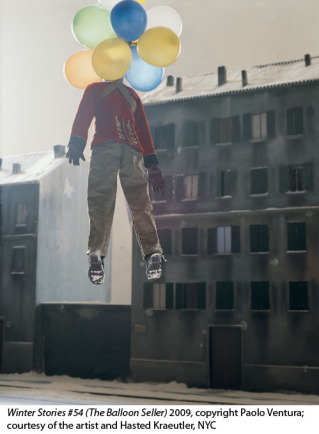 Nostalgia is a potent force. We long for lost times, people we’ve left behind, a former self. Or perhaps we fantasize about paths not taken, ideas left unexplored. Either way, the process of aging makes these thoughts unmistakably bittersweet. We weave fiction and memories until the two become indistinguishable.
Nostalgia is a potent force. We long for lost times, people we’ve left behind, a former self. Or perhaps we fantasize about paths not taken, ideas left unexplored. Either way, the process of aging makes these thoughts unmistakably bittersweet. We weave fiction and memories until the two become indistinguishable.
Paolo Ventura’s work lies at the intersection of fantasy and nostalgia. The Italian-born photographer creates scenes that evoke the past in a way that’s rich, dream-like and occasionally surreal. Ventura does this by painstakingly creating miniature sets—dioramas into which he places realistic dolls and props—then photographing them. The result is a delicious hybrid that veers between reality’s sharpness and the strange logic of dreams.
 What makes Ventura’s work sing, though, is its narrative quality. Brought up on stories (his father was a well-known children’s book author), Ventura seems to have a natural gift for narrative. Each of his pictures is its own little mystery, a bombardment of character and atmosphere and detail that begs for closer examination. Tiny details—a torn poster on a wall, a musician’s mud-soaked trousers, scattered photographs on the ground—invite the viewer to construct a story around them.
What makes Ventura’s work sing, though, is its narrative quality. Brought up on stories (his father was a well-known children’s book author), Ventura seems to have a natural gift for narrative. Each of his pictures is its own little mystery, a bombardment of character and atmosphere and detail that begs for closer examination. Tiny details—a torn poster on a wall, a musician’s mud-soaked trousers, scattered photographs on the ground—invite the viewer to construct a story around them.
This quality gives his art a distinctive flavor that carries across various series of work. Some series—like War Souvenir and The Automaton—are rooted in the realities of World War Two. Others—Winter Stories and Behind the Walls—create fantasy worlds. Ventura says he likes working in both veins.
A self-confessed school truant and voracious reader, Ventura worked as a fashion photographer for a decade before quitting to pursue art photography. His work is on view at the Italian Academy on the Columbia University campus until March 8th (see below for times). He spoke to the Literate Lens from his home in Tuscany.
Literate Lens: Your father was a children’s book author. Were you influenced by him?
Paolo Ventura: A little, but I think my grandmother influenced me more, even though my father was about stories and illustrations. Maybe inspiration is better when it’s more indirect! My grandmother lived with us for more than thirty years. After World War Two, her husband died and she moved from the countryside to Milan. She was very simple, a free spirit, poetic in her own way. She’d befriend people from her village—visiting them in hospital, and dressing them for burial. My brother and I went with her when she did that. We were supposed to stay in an outer room, but we always tried to sneak a look at the corpses.
LL: What else sparked your imagination as a child?
PV: The best thing was not going to school. When I realized that morning was a great time to do my own things, I started skipping school. I’d walk around, watching scenes on the street. If there was a robbery in a bank and the police came, that was wonderful. I’d draw, think, go into bookstores. It made me happy. I didn’t have money to buy my own books, and there’s not much tradition of public libraries in Italy, so I picked up anything I could find. My father had a passion for the authors George Simenon and Joseph Roth. I read a lot of Italian literature from the 1950s and 60s: Primo Levi, Pasolini. When you’re young, you’re free to explore.
LL: You started as a fashion photographer. How did that happen?
PV: When I was in art school, I got a job as a photographer’s assistant. The work was boring, he shot catalog photos of objects, but I wanted to work and didn’t have any other ideas. After six months, the photographer had a car accident and went into a coma, and his brothers asked me to keep the studio going. I was alone there for six months with cameras and lights, so I started shooting my own pictures of things lying around in the studio. When the guy recovered and came back, I no longer saw myself as an assistant. I left and went into fashion photography. I wasn’t really interested in fashion, but all my images were of shoes, bags, etc. I was clueless at that time; I didn’t know you could be a photojournalist or an art photographer.
LL: When did you realize you wanted to do more personal work?
PV: After ten years I asked myself, am I really interested in this stuff? The answer was no. Working in fashion was fun, it had been a good life. But I had the feeling there was no life, no story in anything I was making. If you want to make a great picture, you’ve got to be interested in it! I had contracts with Elle and with Marie Claire magazines, and I just quit. In 2004 I used my savings to move to New York because I thought changing continents would help me create something new. New York seemed the best place to invent a new life. I think everyone thinks that!
LL: Where did the idea of constructing sets come from?
PV: I was living in Brooklyn and I had a small closet. That’s where I did my first work. I had an idea in my mind and I thought I should draw or paint it, but I wanted to take photographs. I knew I wasn’t going to find exactly the right location in real life, so I thought I’d try to make a set. The results were good from the start. What I was seeing in the diorama was exactly what I had in my mind, and that made me very happy.
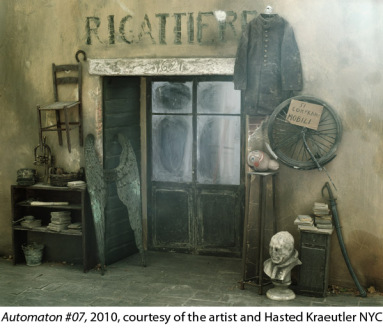 LL: The sets and props are incredibly detailed. How do you make and find everything?
LL: The sets and props are incredibly detailed. How do you make and find everything?
PV: It’s a combination. I make some clothes and props, I find others on eBay. I make things in cardboard because it’s easy to work with. I was never interested in making models, but this is the only way I could represent what I wanted to show. I try to make it look as real as possible, but I also want it to look a bit like a dream. Reality is too boring; we’re already living in it.
LL: Your first series, War Souvenir, was based on stories your grandmother told you about World War Two. The Automaton was based on a story your father told you. So you were a little influenced by him!
PV: Yes. My father was a great storyteller. We’d sit at the kitchen table after dinner and he’d tell stories. Sometimes he’d invent new ones, sometimes we’d ask for old ones. One of my favorites was this story of the automaton. I decided to give him a vision of that story.
LL: The story is about an old man who’s one of the remaining Jews in the ghetto of Venice during World War Two…
PV: It’s completely invented, but it’s based on one real fact. During the war, almost all Jews who lived in the Venice ghetto left. The remaining ones were poor people who couldn’t afford to leave. On the evening of December 8th, 1943, the ghetto was evacuated, all Jews were taken away by Italian fascists. My character is an old Jewish watchmaker. Because he’s lonely, he creates an automaton to keep him company.
LL: You wrote this story as well as photographing it. How did those two experiences compare?
PV: Writing a story is the same kind of process as photographing or painting. It comes from the same place; it’s the same process with different tools. Writing and photography give me the same pleasure and desperation, the same happiness and sadness and anger.
LL: Your other series, Winter Stories and Behind the Walls, have a different feeling. They’re not connected to any specific time.
PV: I tried to make them timeless. There are no vehicles, no objects that can date the photograph exactly. It’s a vague past, or perhaps the future, why not?
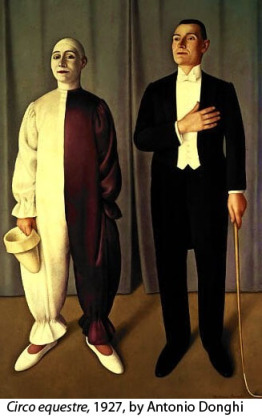 LL: I see echoes in your work of Edward Hopper (for the feeling of isolation) and Magritte (for the surreal elements that creep in). Do you like those artists?
LL: I see echoes in your work of Edward Hopper (for the feeling of isolation) and Magritte (for the surreal elements that creep in). Do you like those artists?
PV: I never thought about this until you said it. I like both of those artists very much. I’m also very indebted to an Italian painter of the 1920s, Antonio Donghi.
LL: In Behind the Walls you used digital manipulation to put yourself in the pictures. Every figure in those images is you. How does it feel to enter your own fantasy worlds?
PV: It’s very natural. I have an identical twin brother, so I’m used to seeing myself from the outside. Every twin has a mirror in front of them. I had a desire to be anchored in my created worlds and not have to put someone else—a doll—there. It was easy to take photographs of myself and digitally insert them. When I look at those images, I don’t see myself. I always try to change my face a bit, find a new character. This was something I did as a child. Because being different from my twin meant being myself.
LL: You could create almost anything these days, with digital technology…
PV: Yes. Before Behind the Walls, I never used Photoshop. I wish I had, because it would have made my life much easier! But post-production costs a lot, and I didn’t have the skills to do it myself. It took me time to get there, but I’m happy I did. The possibilities with the new technology are fantastic. It’s like being a painter and someone gives you a bag, and inside there’s a completely new color. I think photography is much more interesting now than it was before, digital technology has opened the door of fantasy and imagination.
LL: It’s changed the mission of photography.
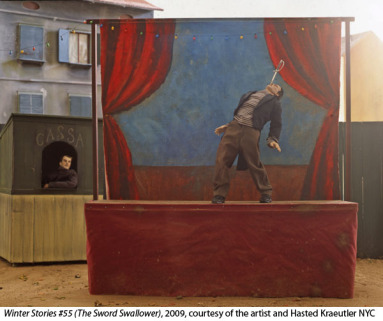 PV: Right. Photography has always been the witness of our history, but now it’s lost that mission a bit and is growing into something else. I know it’s a big tragedy for some people, but for me I think it’s more freeing. It can be art or not, or be a witness or not. There’s the same feeling now that there was in the 1840s, when photography was invented and there was a surge of creativity.
PV: Right. Photography has always been the witness of our history, but now it’s lost that mission a bit and is growing into something else. I know it’s a big tragedy for some people, but for me I think it’s more freeing. It can be art or not, or be a witness or not. There’s the same feeling now that there was in the 1840s, when photography was invented and there was a surge of creativity.
LL: Where is your creativity going to take you next?
PV: I’d like to make a real movie. Also an opera, but without music. Just the stage, the costumes, the characters. With movies, I think you can go deeper, or with music or literature. Even with cuisine. If I see a photo show, it’s fun. But when I hear music, read a great book, or even eat a great plate of pasta e fagioli, my emotions are really stirred. Don’t you think?
LL: I think that’s a very interesting thing for a photographer to say!
PV: Well, I’m objective. But I’m just in the beginning; there are many more stories I want to tell. And I’m a very lucky person. I give thanks to God, if there’s a God, because I love my work. I’m living the life I always wanted.
———————————————————————–
Paolo Ventura is represented by Hasted Kraeutler Gallery NYC. His work is on show at the Italian Academy, Columbia University through March 8, 2013, 9:30 a.m. – 4:30 p.m. Monday through Friday. The Italian Academy is at 1161 Amsterdam Avenue, New York, NY 10027.
Click here to see a video of Ventura talking about Winter Stories and how he makes his sets.
Click here to see Ventura talking about and reading The Automaton.
Click here for a panel discussion with Paolo Ventura, curator Renato Miracco and editor Denise Wolff.
5 comments on “Flights of Fantasy: An Interview with Paolo Ventura”
Information
This entry was posted on February 1, 2013 by sarahjcoleman in Exhibitions, Interviews, Uncategorized and tagged Antonio Donghi, Automaton, Behind the Walls, Hasted Kraeutler, Italian Academy, Paolo Ventura, Photoshop, War Souvenir, Winter Stories.Shortlink
https://wp.me/p25Qfq-nIRecent Posts
Archives
Categories
Enter your email address to follow this blog and receive notifications of new posts by email.
Join 11,055 other followers

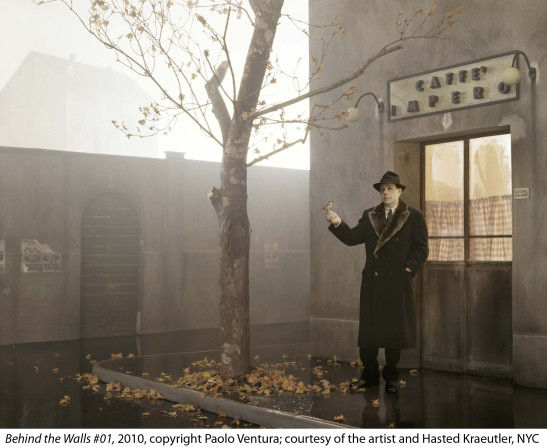
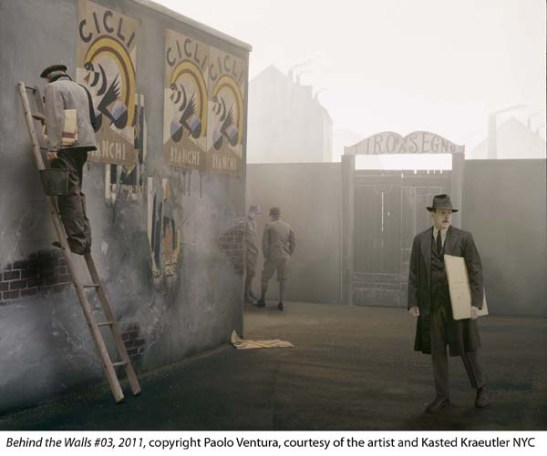
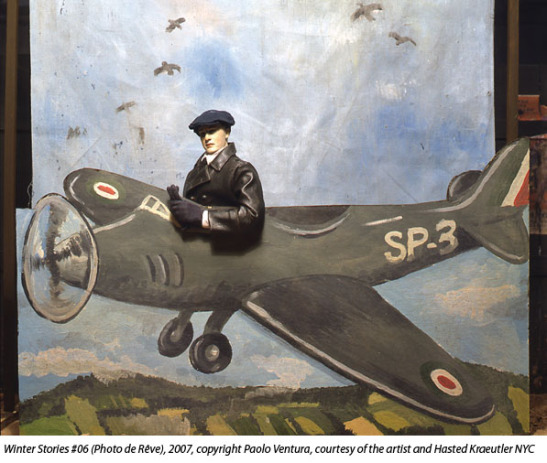
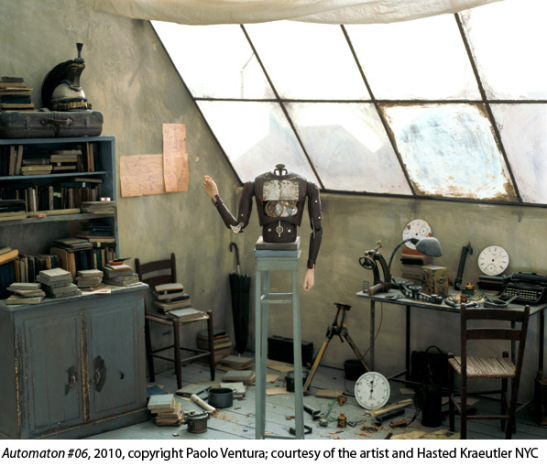
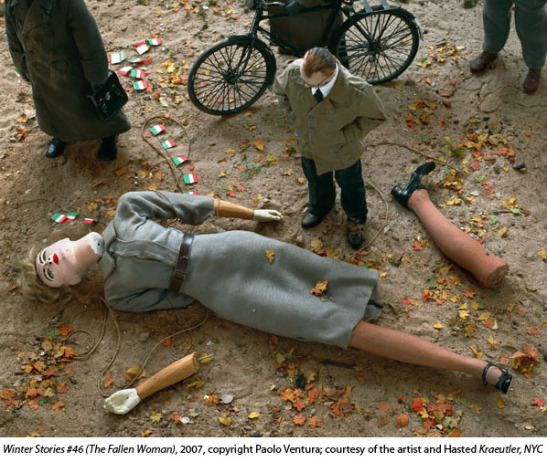
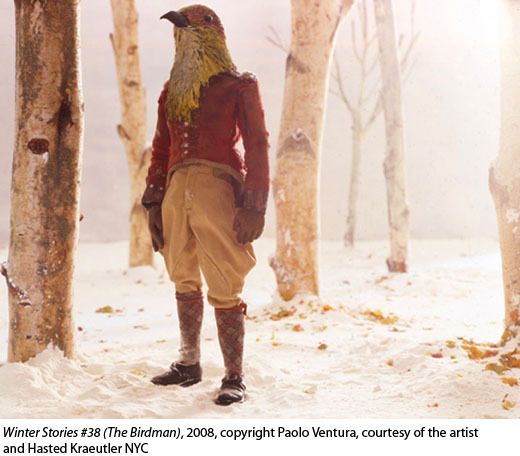

Wonderful interview!
Thank you Ma’am!
That was a great interview and a fascinating read!
Paolo Ventura work is unforgetable, indeed ’emotions stirred’. ‘The Birdman’ is extraordinary.
Reblogged this on nicholajaneart and commented:
this artist is someone I have been looking at and also help along with my interest in ruins and the discarded object inspire some of my work at uni recently, really enjoyed reading this.